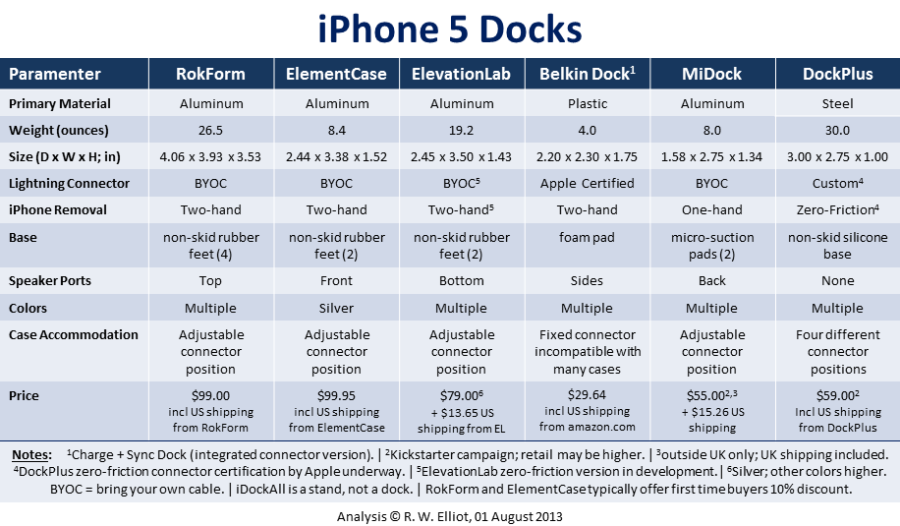
Charging docks have been a popular accessory for a large variety of electronic gadgets for many years. Apple was among the first OEMs to offer docks for their ever increasing range of iPods, and as time went on, to their iPhones. With the introduction of Apple's Lightning connector, the company announced it would defer making docks to third party providers. Unlike the previous Applie 30-pin connector, which was regularly copied or altered, official Lightning connectors contain an authentication chip that makes it difficult for third-party manufacturers to produce compatible accessories without being approved by Apple.
Another challenge that has faced dock manufacturers increasingly is the extensive range of accessory cases that most iPhone users employ. The cases increase various dimensions of the integrated assembly that can make docking more difficult. The 30-pin and Lightning connectors both have spring-loaded mechanisms designed to maintain their engagement until a non-accidental pull force is applied. These circumstances gave rise to constant criticisms of Apple's early docks because certain cases could not be accommodated and two hands were typically required to undock the iPod or iPhone.
The Lightning connector is now widely used across Apple's product family of iPhone, iPod and iPad. The first Lightning connector-based docks were made by firms either already in the Apple accessory market while some were start-ups. To hit the ground running, they avoided Apple approval cycle by engineering solutions that to use an Apple provided Lightning cable. These products are called "Bring Your Own Cable" (BYOC) docks.
A BYOC dock advantages include a high range of connector adjustability which largely satisfies the customer need to leave the case on the device and early availability. However, all but one of BYOC the docks evaluated demand two-handed undocking. Several of these docks are quite large making them difficult to frequently travel with. Even the ElevationLab iPhone 5 incarnation needs two hands while their highly successful iPhone 4 dock did not. only a modified Lightning connector-based dock can be undocked with one hand. A BYOC dock, unless somehow affixed to its surface like MiDock--which won't work on all surfaces--or being even heavier than RokForm, will demand two hands to undock.
Apple has now disclosed that iOS7 due out this autumn will detect a non-Apple certified Lightning connector and as a minimum flash an annoying warning when the iOS device is attached to it. Users presently have three options: (1) select a BYOC dock and accept two-handed undocking, (2) select a non-certified modified Lightning connector dock, or (3) modify a Lightning cable to make it zero-friction. The cable modification requires that both of the thin sides of the Lightning connector have the detent extended making it into a channel, or have the remaining tip of the thin sides ground off altogether. One must carefully file or grind the connector edges with a hobby tool. To date Apple has approved only docking evices with a standard Lightning connector.
Dock+ is the only dock manufacturer with an announced plan to deliver an Apple-Certified zero-friction dock. The company is currently delivering a non-certified version and offering an upgrade path to a certified product to their Kickstarter backers. The Dock+ is by far the best iPhone5, iPod and iPad dock available today. The product's finish, density and overall manufacturing quality is among the very best on the market. The company is the only one that has addressed the critical customer needs of docking with the case on and one-handed undocking. The small size makes it a viable travel accessory as well. Although it has no speaker ports, tests have demonstrated that neither speaking nor listening sound quality has been compromised. Apple certification should be achieved no later than the fourth quarter of 2013.